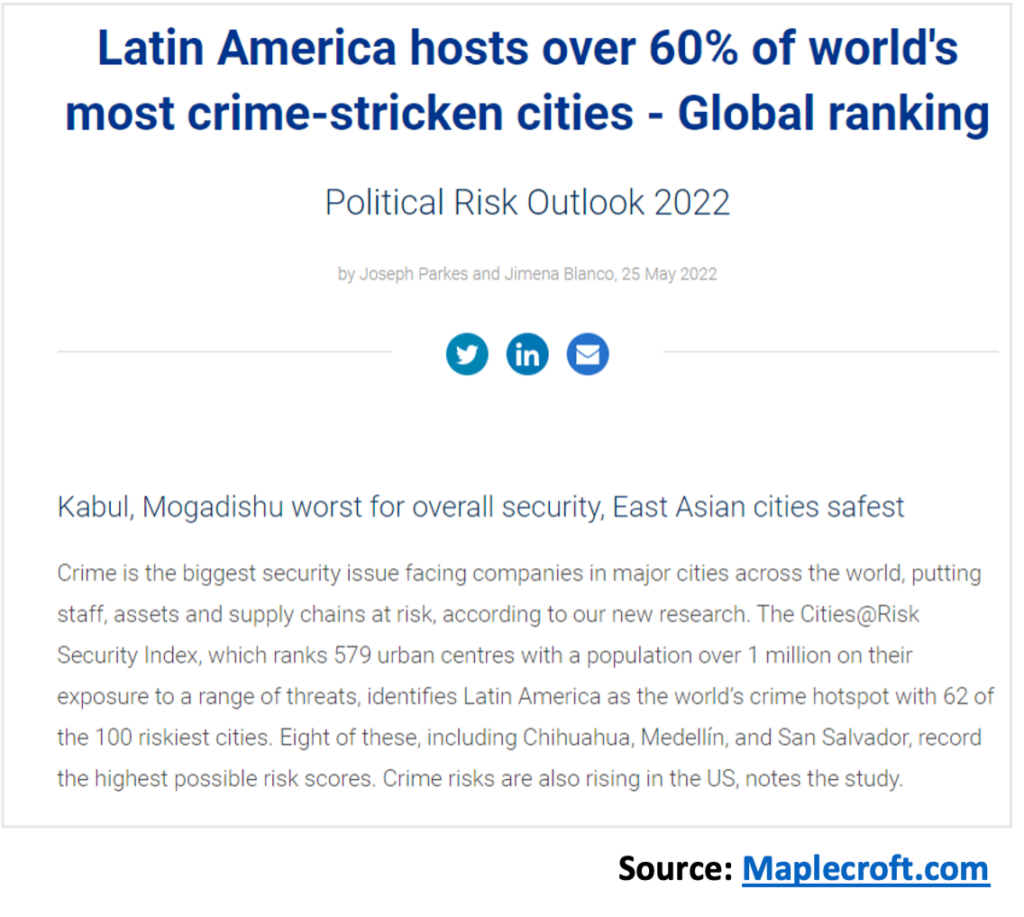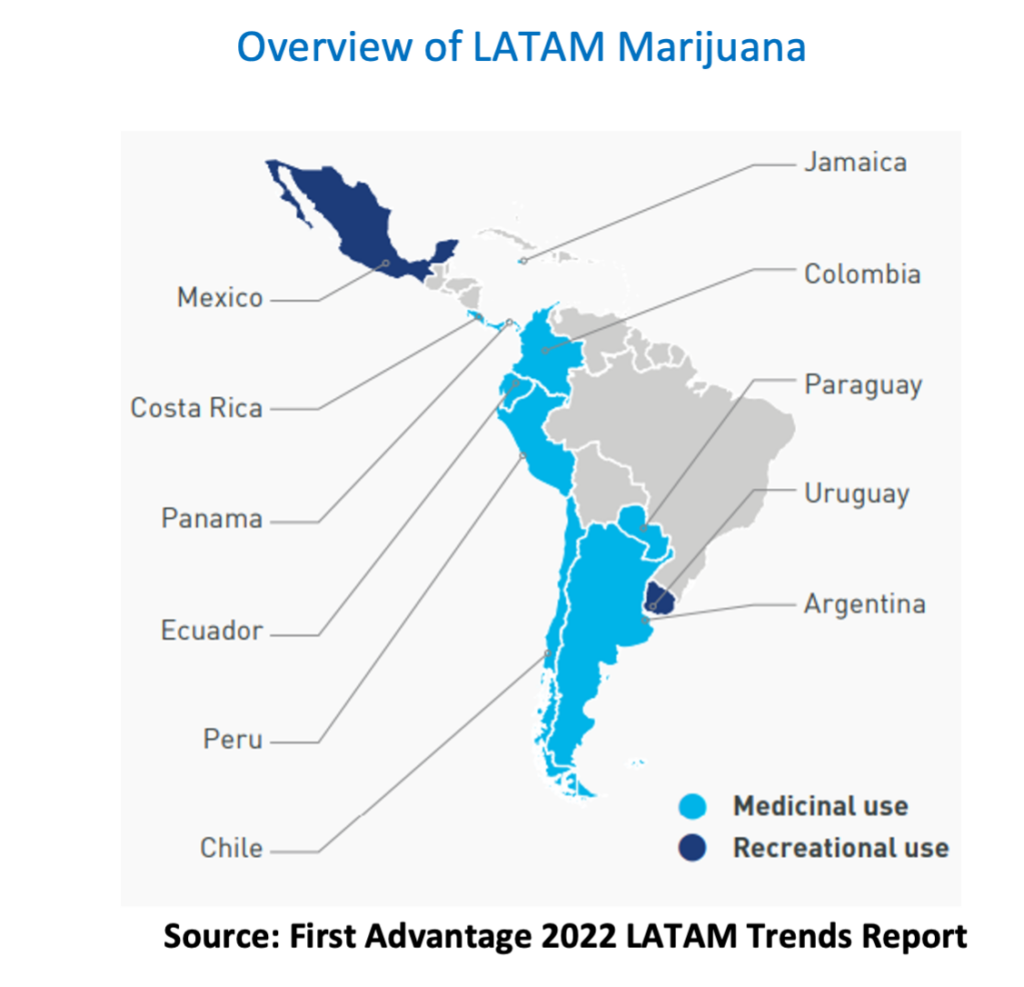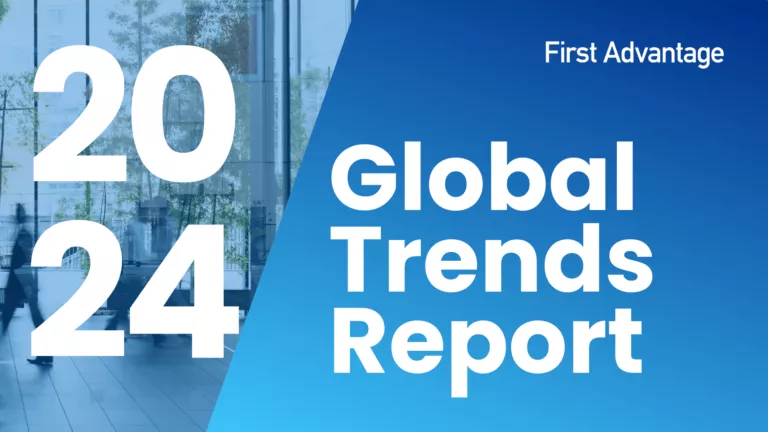The pandemic redefined labor markets around the world, and Latin America (LATAM) was no exception. Unprecedented HR challenges including furloughs, layoffs and abrupt shifts to remote work and digital hiring processes left many employers uncertain on the best ways to screen and hire new workers.
It was during this time, in December 2021, that First Advantage acquired Mexico City-based MultiLatin Background Screening and its localized coverage across 30 LATAM countries and the Caribbean. Today, we’re harnessing this in-depth regional experience plus exclusive insights from our 2022 LATAM trends report to offer three tips every employer should know when performing LATAM background checks.
Tip 1: Do not skip the criminal check.
In the past, LATAM employers simply collected an applicant’s document information in the hiring process, in lieu of a background check. It was fast, simple and cheap. Today, however, taking the extra care to perform professional background checks is increasingly mainstream across the region for a few reasons, the biggest of which is risk mitigation. Read more here.
More than one-third of regional employers, 38 percent, say the top reason they perform background checks is to mitigate risk.
Their concern is well-founded. According to a 2022 Political Risk Outlook study, LATAM is home to 62 out of 100 of the world’s most crime-stricken cities. This is largely due to cross-border drug trafficking and the presence of gangs and other criminal organizations in certain areas. Acknowledging the impact of crime on employers, the study notes that “Companies located in the region’s international business hubs are not spared exposure to the trend.”
Interestingly, less than 1 percent of criminal searches within the region return records matching the subject, according to the 2022 LATAM trends report. Yet, employers know it only takes a single negative criminal incident in the workplace——to result in potentially irreparable damage to their customers, their bottom line or their brand.
Don’t think of criminal checks as a way of “weeding out” or disqualifying applicants. Instead, think of the results as a critical layer of insight that helps you better understand applicants so you can make more informed hiring and onboarding decisions. For instance, the discovery of a criminal record may not disqualify a good candidate if the offense isn’t related to the job in question, or if the applicant is vying for a job that has little to no risk exposure.
As for best practices, it’s recommended that employers schedule criminal checks at the end of the hiring process, after all interviews and most other hiring tasks are complete. This gives you more time to get to know applicants and their qualifications before factoring in a potential criminal history.
Tip 2: Always verify the basics.
The 2019 MultiLatin’s Contracting Risk Index revealed that more than 10 percent of applicants falsify or embellish their academic background and 22 percent do the same with their work experience. That’s one or two out of every 10 candidates.
More recently, the 2022 LATAM trends report backs up these numbers. Of the employers that detected background check discrepancies in 2021, most—87 percent—were found within employment and academic verifications. A discrepancy occurs when the information uncovered in a background check does not match what was provided by the applicant.
Knowing this, employment verifications are the highest priority background check for LATAM employers, ahead of criminal checks, according to the trends report.
In fact, nearly one-fifth of all employers in the region, 17 percent, say they use background checks to ensure their applicants have the right skills and qualifications. Specifically, this involves verifying an applicant’s employment and education history. These types of verifications are critically important to helping HR teams:
- Ensure applicants meet the minimum-required qualifications.
- Shorten learning curves, accelerate time-to-productivity and boost long-term productivity.
- Reduce costly turnover rates by placing applicants in the right job that positions them for success.
- Comply with industry-specific hiring guidelines.
Tip 3: Always drug test for marijuana use, when permissible.
The biggest drug testing question facing LATAM employers is the same one facing U.S. employers: should they test employees for marijuana use? Despite laws legalizing the use of marijuana for medicinal and/or recreational use in countries throughout LATAM, employers should continue to test for the drug, when permissible, and here’s why.
Marijuana is the most detected drug for LATAM employers, and 31 percent of employers in the region say they disqualify job applicants who test positive for it, according to the trends report.
Marijuana is easily accessible and has a high potential for abuse. It can impair employees for several hours after use, posing real-life workplace safety risks, especially if an impaired worker is driving, operating heavy machinery or administering healthcare. Impaired workers can also poorly represent the business in customer-facing transactions and deter repeat business.
Employers with a vested interest in promoting workplace safety are strongly encouraged to test for marijuana as part of a standard drug test. Just because it’s legal does not mean it’s appropriate to use the drug while on the job. In most cases, employers are allowed to test for marijuana use during the hiring process and while on the job, and they’re permitted to make hiring (and firing) decisions based on those test results.
Exceptions may exist, so always consult with legal counsel on specific drug testing restrictions and guidelines pertaining to marijuana use. Also, always work with an experienced background screening provider that has a solid, first-hand understanding of laws within the region. They can help you craft an effective, compliant drug testing program that best protects your workplace.
The Factor Sorpresa, or Surprise Factor, in LATAM Drug Testing
Drug testing positivity rates have dipped about 3 percent since 2020, according to the 2022 LATAM trends report. However, there’s an interesting companion trend that helps explain the results.
Applicants will sometimes deliberately skip their drug testing appointment because of recent drug consumption that would cause them to test positive. Instead, they may reschedule their appointment several times until the drug is potentially undetectable. This behavior is known throughout the region as the Factor Sorpresa (or, “Surprise Factor”) because it catches employers off-guard. Our experts believe it may be partly responsible for the reduced positivity rate.
For employers wanting to optimize their background checks within this region, the First Advantage LATAM trends report provides the real-world intelligence required to make smart program adjustments. It also offers focused benchmarking insights—similar to the data listed throughout this article—and the ability to drill down regional screening activities to specific countries and industries. All information is provided in context with current macro and micro recruiting trends, and further supported by forward-looking strategies that help employers hire smarter and onboard faster. Click here to view the 2022 LATAM Trends Report.




 京公网安备 11010502052956号
京公网安备 11010502052956号

